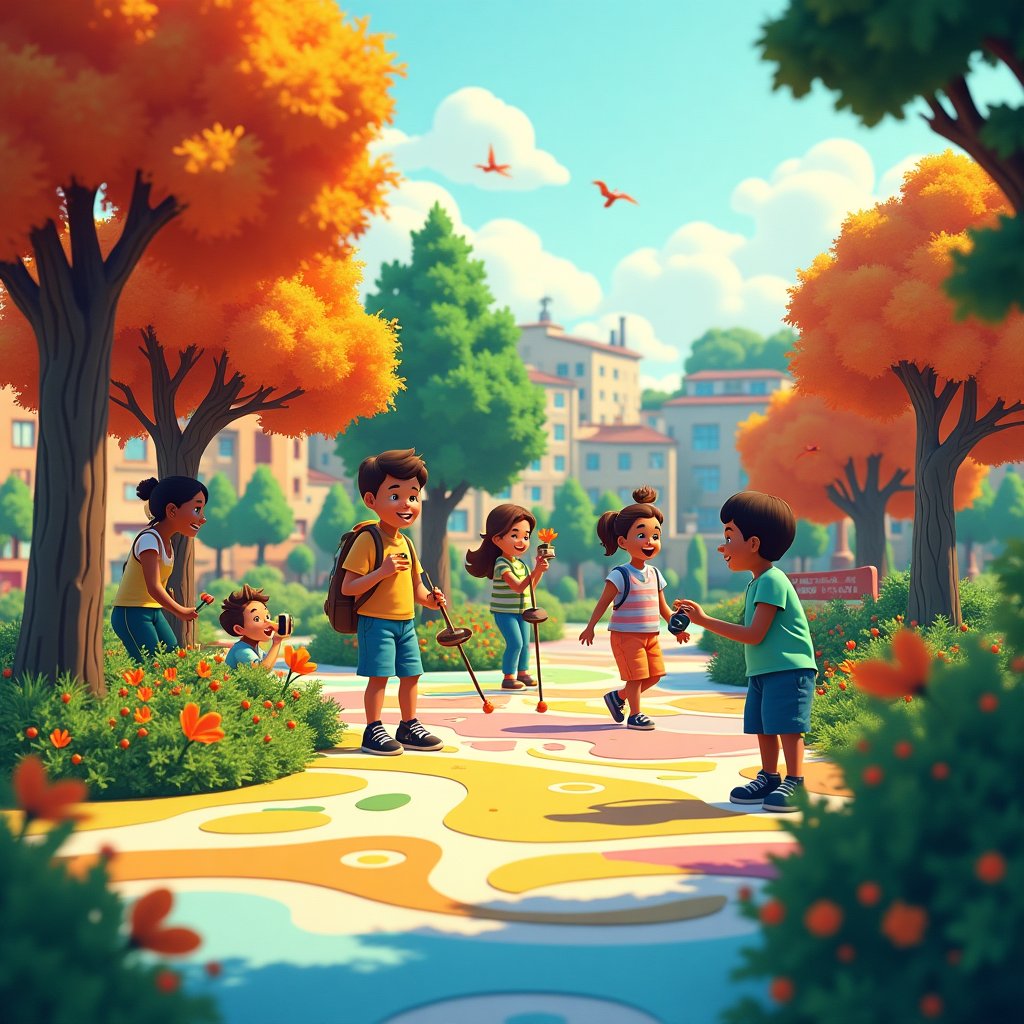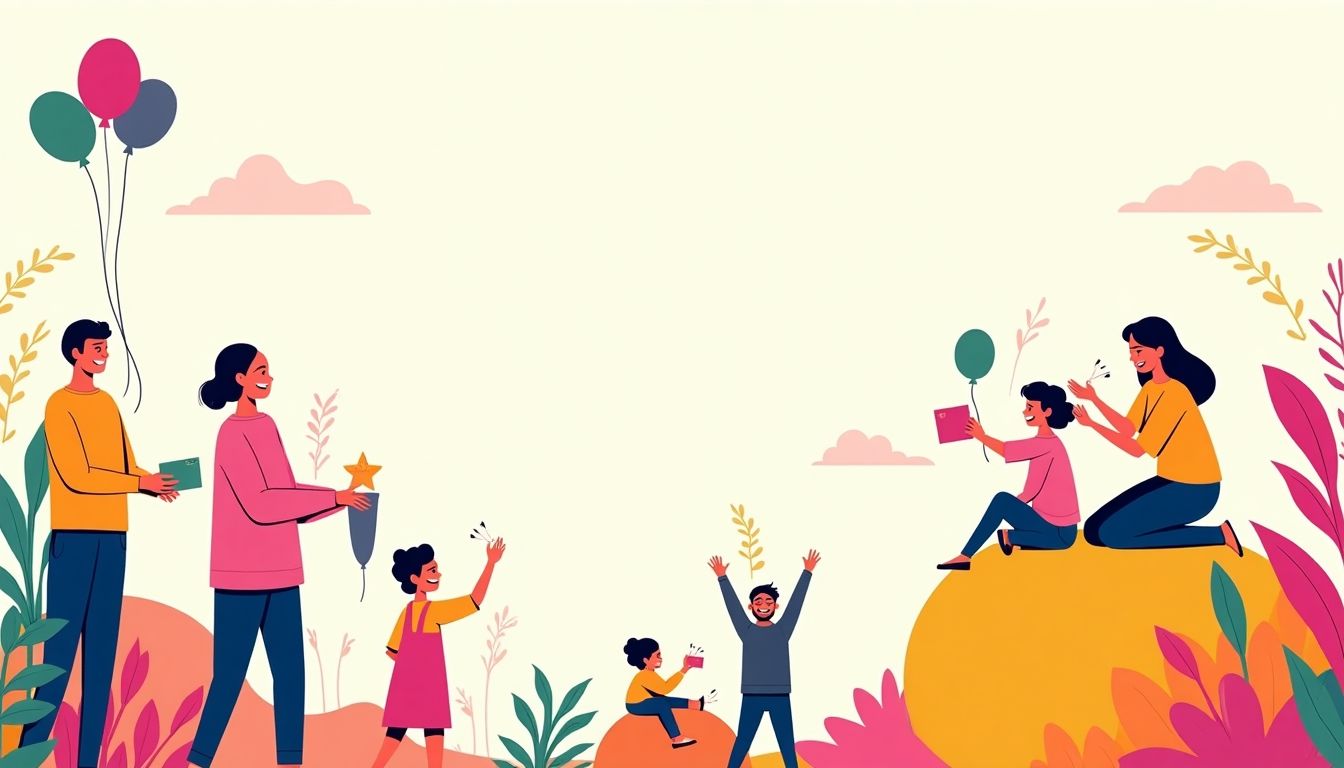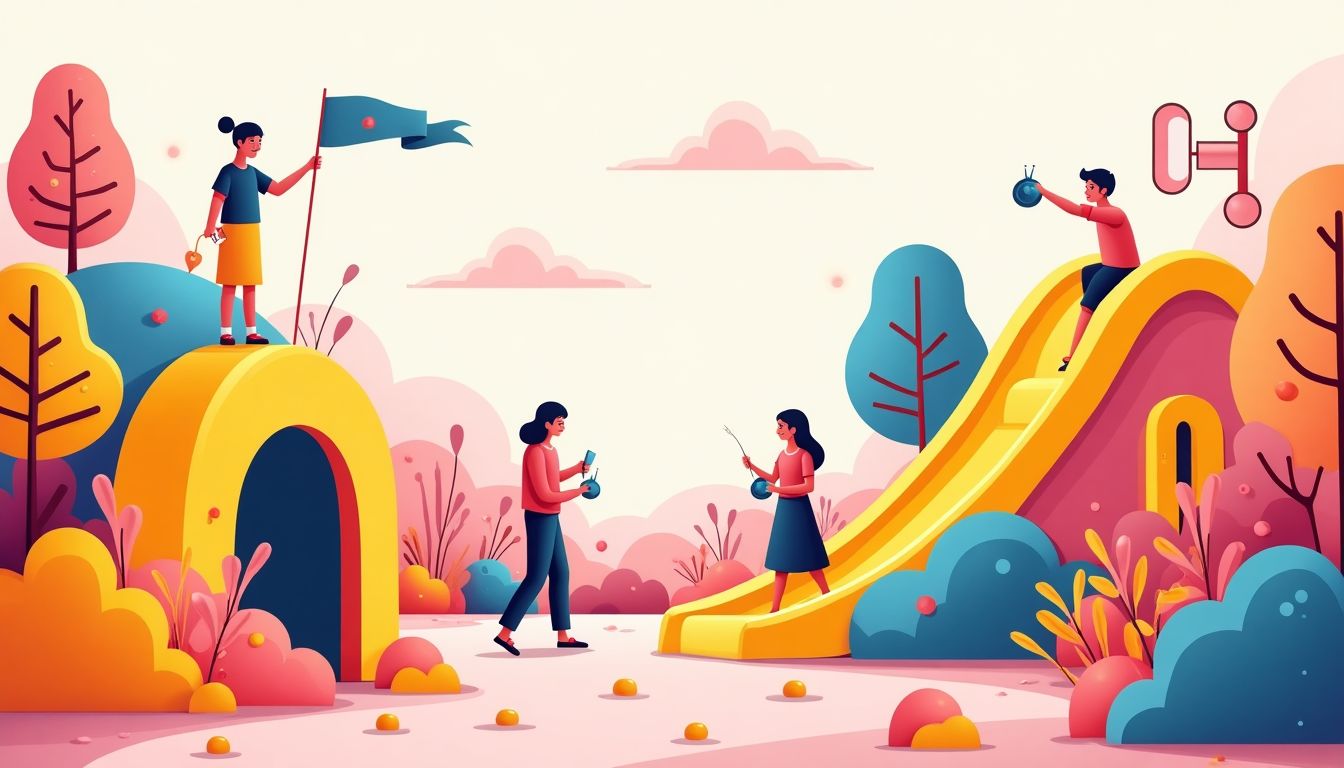Introduction: Rediscovering Play in a Post-Work Society
Growing old is mandatory, but growing up is optional. — Walt Disney. This quote carries a whimsical truth that resonates deeply in today's rapidly changing world, where the lines between work and play blur more than ever before. In our quest for productivity, we often sacrifice the joy and creativity that make life vibrant. As we navigate the advent of Artificial General Intelligence (AGI), we must consider whether this new technology will inspire us to reconnect with our playful spirit, much like Disney's vision challenges us to preserve our inner child. What if, instead of fearing that machines will replace us, we embrace the possibility that they could liberate us to rediscover playfulness? Imagine if we had the freedom to return to the joys of childhood—unfettered by the constraints of work and flooded with curiosity about the world around us.
This article explores how the emergence of AGI could transform our understanding of work, enabling all individuals to reconnect with play at a universal level. This shift is not merely about robots taking our jobs; it's about wrestling back our lives from the monotony of daily drudgery and reimagining our futures filled with wonder and creativity. The question we must wrestle with is: will the future allow humanity to inject joy back into life, as we willingly surrender the burdens of traditional labor?
As we dive into this topic, we must acknowledge the voices of luminaries like John Haddy, who have long championed the significance of creative thinking and play, or Sir Ken Robinson, known for his advocacy on the importance of cultivating creativity within education. Lastly, the vivid imagination of artists like Leonardo Coelho helps us envision a society where imagination and play are integral to our shared experience.
1. The Historical Context of Play and Work
The relationship between play and work has evolved over time, especially in Western cultures. Historically, play was once a crucial element of education and community interaction. In this section, we'll explore how the Industrial Revolution shifted the perception of work and play, creating a divide that continues today.
1.1 The Changing Nature of Work
- Examine how the Industrial Revolution redefined the workplace.
- Analyze the impact of globalization on work-life balance.
1.2 The Role of Play in Human Development
- Discuss the psychological benefits of play in childhood.
- How play enhances creativity, problem-solving, and social skills.
2. The Shift Toward Automation and the End of Work
As automation and machine learning are taking over tasks both big and small, the traditional model of work we’ve come to know is taking a nosedive. Get ready to buckle your seatbelts, because the road ahead may feel bumpier than usual! In this section, we will dive into the implications of Artificial General Intelligence (AGI) and a world where traditional jobs as we know them could disappear—poof! But what will follow? Let’s explore that.
2.1 The Rise of AGI and Its Consequences
The emergence of AGI isn't just a sci-fi movie fantasy; it's an actual, tangible reality soon to test the waters of the job market. Think of AGI as your super-smart robot pal, who can learn, understand, and adapt like a human—only faster and possibly more reliable. According to a report by McKinsey, up to 800 million jobs may be lost to automation globally by 2030. That's a staggering number—imagine a line of job seekers stretching from here to the moon!
Industries such as transportation, manufacturing, and even finance are already feeling the heat. Take self-driving trucks from companies like Uber Technologies for instance. Once revered as our road warriors, long-haul truck drivers might find themselves replaced by a computer on wheels. Spooky, right? But as we ponder job loss, let’s also look ahead. What are the potential solutions?
2.2 A New Vision for Society Without Work
Could the world without traditional jobs be a fantastic playground? Yes indeed! Enter the concept of a Universal Basic Income (UBI). This innovative idea suggests giving all citizens a consistent cash allowance. Think of it as a monthly allowance from an old aunt—if only she had billions to spare!
This newfound freedom could open doors—and hearts!—to a culture that prioritizes play and creativity over clocking in. Imagine all those formerly stressed-out employees exploring their artistic sides, joining dance classes, or even starting quirky businesses that bring joy to others. Community gardens, art installations, and countless innovation projects could blossom. The key lies in reshaping our values and pursuing what brings us joy and fulfillment. Now, let’s refocus and consider something equally essential: the role psychology plays in this adventure!
3. The Psychology of Playfulness
Let’s face it: play isn’t just for kids pretending to be superheroes. It’s a crucial aspect of staying healthy in both body and mind—just like eating your veggies, but a lot more fun! This section will uncover how reconnecting with our playful instincts can enhance our mental health, creativity, and overall quality of life. Spoiler alert: It turns out, playing isn’t just “child’s play”!
3.1 The Science of Play
Researchers have discovered that play can be a powerful antidote to stress and a significant boost to personal growth. That’s right, folks—playfulness can help build secret ninja skills! A study published in the *American Journal of Play* reveals that engaging in playful activities increases dopamine levels, which is your brain's feel-good neurotransmitter. Who needs a piñata party? Simply play a game with friends to reap those rewards!
Moreover, adults who participate in regular playful interactions tend to be more resilient and adaptable. Picture yourself gracefully dodging life's curveballs while balancing on a unicycle—talk about juggling! The world can be overwhelming, but play acts like a magical shield, helping you navigate through challenges with grace.
3.2 Reigniting Curiosity and Wonder in Adulthood
In our adult lives, it’s easy to let curiosity fly out the window. It’s time for an intervention! Remember those moments during childhood when an ordinary rock became a magical treasure? It's essential for grown-ups to rediscover that sense of wonder. Pursuing lifelong learning, attending workshops, or even joining a community group focused on fun can breathe life back into your inner child.
Want some fun strategies? Think of engaging in hands-on activities, like pottery or improv comedy. Not only will these experience spark your imagination, but they’ll also connect you with like-minded people who share your quirks. Before you know it, play could transform into a lifelong adventure fueling curiosity at every turn!
4. Cultural Perspectives on Play
Cultural attitudes towards play shape how individuals and communities view its importance. Exploring different cultural perspectives on play can help us identify valuable lessons for fostering a playful society. Each culture offers unique insights that could inspire us to reconnect with our playful selves.
4.1 Indigenous Perspectives on Play and Community
Many indigenous cultures see play as a vital social connector, not just for children but for all ages. Play is an essential part of community life, fostering relationships and shared experiences.
- For example, the Native Languages project showcases traditional games that promote community bonding.
- Traditional games often focus on storytelling, cooperation, and skill-sharing, making them relevant in modern society as well.
4.2 Global Movements Promoting Play
Across the globe, various initiatives are designed to encourage playful learning and creativity. These movements recognize the importance of play in all life stages, pushing for a societal shift toward valuing play.
- The Playful Learning Movement: This global initiative focuses on integrating play into education, empowering children and adults to learn joyfully. More about this movement can be explored at Playful Learning.
- Playful Architecture: Cities like Copenhagen have embraced playful architecture, incorporating playful designs in public spaces that invite exploration and interaction.
5. The Path Forward: Building a Playful Society
To create a culture that embraces play and curiosity, we need intentional action from both communities and individuals. It's more than just reintroducing playgrounds; it's about fostering environments that encourage creativity and exploration in daily life.
5.1 Community Engagement and Play Spaces
Accessible public spaces are crucial for fostering play. They act as hubs for creativity and social interaction, allowing individuals to connect through shared experiences.
- Importance of Public Spaces: Parks, playgrounds, and communal areas offer residents a chance to engage in play, regardless of age.
- Successful Community Initiatives: Examples include community gardens that incorporate games or local organizations that host "play days" in public spaces.
5.2 Educational Reform: Integrating Play into Learning
To redefine education, we need to incorporate play into learning environments. Play-based learning encourages curiosity and inspires a love for learning from an early age.
- Evolution of Education: Schools can integrate imaginative play in their curriculum, allowing children to explore concepts through hands-on experiences.
- Successful Models: International examples include the Reggio Emilia Approach and Finnish education, known for its emphasis on play in early childhood learning.
6. AI Solutions: How Would AI Tackle This Issue?
As we envision a future where play thrives, we must explore the practical role AGI can play in supporting and enhancing a playful society. With its ability to process vast amounts of data and learn continuously, AI can help catalyze a more joyful, curious world. Here are a couple of potential solutions:
6.1 Personalized Learning Experiences
- Utilizing AI to adapt learning paths based on individual interests and play styles. Imagine software like Khan Academy integrating AGI to provide bespoke educational experiences that morph and shift based on a learner's engagement and interactions.
- Creating software solutions that gamify education, encouraging exploration through play. Consider applications such as Classcraft, which transforms learning into a playful adventure, driven by AI analytics that monitor student reaction and success.
6.2 Community Building and Social Connections
- Developing platforms powered by AI that promote local play events and workshops. Envision an app like Meetup enhanced with AI, suggesting events based on user interests and behavior patterns, creating an ecosystem of engaged, playful communities.
- The role of social robots in encouraging play among different age groups. Imagine robots like Vector assisting in various activities, aiding in everything from board games to interactive storytelling, making play an integral aspect of daily life.
By using AI strategically, we can inspire curiosity and creativity while fostering environments ripe for play.
Action Schedule/Roadmap
Day 1 to Year 2 - Structured Plan for Implementation
To create a playful society with the aid of AGI, a meticulously structured roadmap is essential. Below is a comprehensive timeline:
Day 1: Launch a Community Initiative
- Gather local stakeholders (educators, tech developers, community leaders).
- Organize a kickoff meeting to identify community play needs and integration strategies for AI solutions.
Day 2: Research Initiative Team Formation
- Recruit a diverse team of psychologists, AI technologists, educators, and play theorists.
- Establish a project charter outlining objectives, timelines, and roles which includes partnerships with organizations like Playworks.
Day 3: Survey Development
- Create and distribute surveys to assess community perceptions of play and AI.
- Utilize AI tools like SurveyMonkey for data collection and analysis to identify barriers to engagement.
Week 1: Establish Partnerships
- Connect with local businesses, tech firms, and organizations like National Geographic for funding support and resources.
- Engage with health professionals to align play with well-being initiatives, promoting resources like American Psychological Association.
Week 2: Community Workshops
- Host workshops teaching citizens on the value of play and creativity, leveraging technology for interactive sessions.
- Facilitate small group discussions and activities modeling playful learning practices developed at institutions like Edutopia.
Week 3: Pilot Play Programs
- Launch pilot programs targeting specific demographics (children, adults) through collaborative spaces such as Kickstarter for funding and community support.
- Document participant feedback and program effectiveness with AI-assisted analytics tools.
Month 1: Revamp Educational Curriculum
- Collaborate with local schools to integrate play-oriented learning, employing interactive methods that motivate students.
- Organize teacher training focused on playful teaching methods, connecting with resources at organizations like TED.
Month 2: Analyze Pilot Program Data
- Evaluate the success of pilot programs utilizing AI to analyze engagement and learning outcomes.
- Consult with educators and play professionals for insights on improvement, potentially reaching out to global education institutions for expert advice.
Month 3: Community Art and Play Festival Planning
- Plan a community-wide event focused on play and creativity, leveraging tech for advertising and scheduling.
- Engage local artists and performers, perhaps collaborating with local galleries or theaters to promote the event.
Year 1: Implement Long-term Play Spaces
- Develop plans for public art installations and play zones that incorporate interactive elements.
- Engage with urban planners to prioritize playful design in infrastructure upgrades, looking into models like those created by Playcore.
Year 1.5: Launch AI-Powered Community Platform
- Develop and launch an AI platform to connect residents with local play events and activities.
- Enable personalized experiences based on users' preferences to escalate community engagement.
Year 2: Evaluate Community Transformation
- Conduct comprehensive community surveys to assess changes in engagement with play.
- Publish findings to guide future play initiatives and share success stories through platforms like JSTOR.
Conclusion: Embracing a Playful Future
As we stand on the verge of an AGI-dominated future, it is crucial to redefine our relationship with work and play. The end of traditional labor should not signify a lack of purpose, but rather open the door to collective joy, exploration, and creativity. Imagine a world where play takes precedence in adult lives—a life where the burdens of tasks dissolve into the infinite possibilities of imaginative interaction. By nurturing a playful society, we enhance our well-being and forge deeper connections with ourselves and others. The journey to rich, playful living is our shared mission. The question lingers: Are we ready to embrace our inner child and weave joy back into the tapestry of daily life? Those who answer “yes” can help us shape a future where creativity is not just a pastime, but a foundation for vibrant communities. Together, we can restore the delight in play and reclaim the essence of childhood throughout our lives.
FAQ
- What does it mean to have a playful society?
- A playful society is a community where play, curiosity, and creativity are key parts of everyday life. It means that people of all ages can explore, learn, and have fun together. Play isn't just for kids; it's essential for everyone! This type of society can improve personal joy and connection among individuals.
- How could AGI change the future of work?
- AGI, or Artificial General Intelligence, could automate many jobs that people do today, which means traditional work might not be needed as much. This could free up time for people to pursue creative and playful activities, leading to a more enjoyable lifestyle. Many experts believe that as AGI develops, society may shift from a work-focused world to one that values play and creativity. For more insights, you can explore Oxford Learner's Dictionaries.
- Can adults really benefit from play?
- Yes, adults can gain a lot from engaging in play! Play helps improve mental health, creates social bonds, and sparks creativity. Research suggests that activities like games, sports, or even creative hobbies can lead to better problem-solving skills and emotional well-being. Organizations like the American Play Therapy Association emphasize the importance of play not just for kids but for adults too!
- What are some examples of communities promoting play?
- Many cities around the world are starting initiatives to encourage play. Here are a few examples:
- Play Streets: Many neighborhoods close off streets to cars during specific hours to create play areas for children and families to enjoy.
- Community Art Projects: Local artists often organize workshops where residents can create murals or sculptures, fostering creativity.
- Playful Architecture: Some towns design parks and public spaces with features like climbing walls, interactive sculptures, and more, inviting people to play.
- How can AI support the development of a playful society?
- AI can play a big role in creating a playful society by:
- Developing personalized learning experiences that adapt to individual play styles and interests.
- Connecting communities through platforms that promote local play events and activities.
- Creating fun interactive robots or apps that encourage playful learning for people of all ages.
With these tools, AI can enhance curiosity and creativity in a variety of engaging ways.
- What is the role of education in building a playful society?
- Education is crucial in fostering a playful society. Educational systems can integrate play into learning by:
- Encouraging hands-on activities and collaborative projects that spark creativity.
- Training teachers to use playful methods in their classrooms to make learning more engaging and fun.
- Incorporating field trips and experiential learning opportunities that emphasize exploration and discovery.
Schools that embrace this approach can help create future adults who value play and creativity in their lives.
- How can individuals contribute to a playful society?
- Everyone can play a part in building a playful society by:
- Joining community events focused on play, whether it's games, art, or sports.
- Creating and participating in informal gatherings where people can explore interests together.
- Encouraging a playful attitude in daily life by finding joy in simple moments, like playing games with friends or trying out new hobbies.
Your involvement can help cultivate an environment where play is encouraged and celebrated!
Wait! There's more...check out our gripping short story that continues the journey: Reclaim the Dream
Disclaimer: This article may contain affiliate links. If you click on these links and make a purchase, we may receive a commission at no additional cost to you. Our recommendations and reviews are always independent and objective, aiming to provide you with the best information and resources.
Get Exclusive Stories, Photos, Art & Offers - Subscribe Today!





























Post Comment
You must be logged in to post a comment.